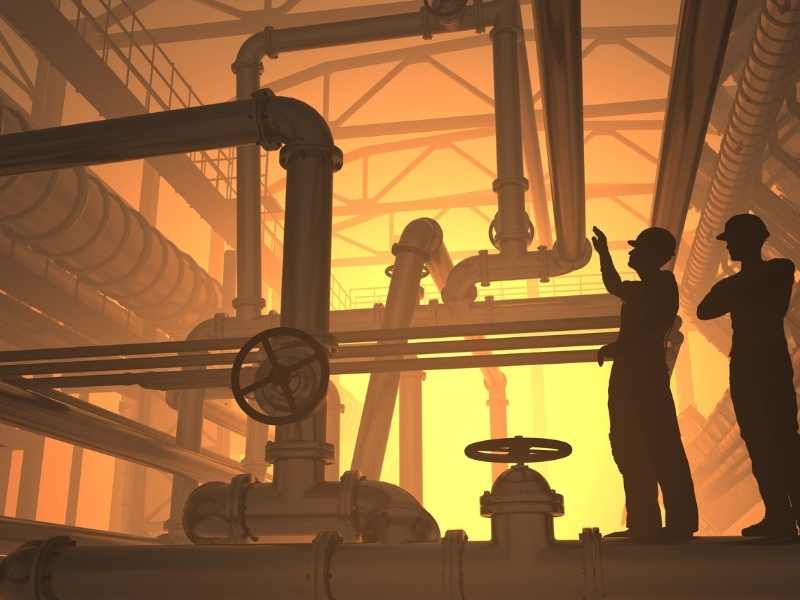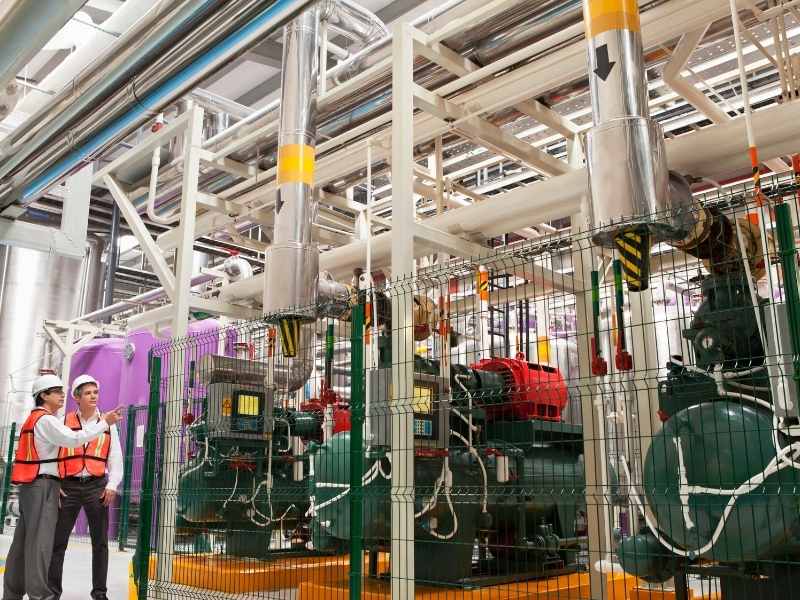Almost all industrial machines emit heat during production. If this heat is not dissipated properly, it could damage some sensitive equipment and negatively affect your finished products. This is why many industries use industrial chillers to regulate the temperature of these machines and to cool pieces of equipment in a quick and effective way. By doing so, productivity and manufacturing output can remain at an optimal level.
Importance of Maintaining Industrial Chillers
Industrial chillers play an essential role in cooling plastic manufacturing processes and internal machine components. This refrigeration system is designed to lower the temperature of machinery, industrial spaces, and process fluids by removing unwanted heat from the system and transferring it elsewhere. Water, air, and vapor are the common mediums.
While industrial chillers have seen widespread adoption across many different sectors, the equipment also requires regular and proper maintenance to keep them operating efficiently for a long time, as well as in an ideal operating condition.
Fundamentals and Best Practices for Maintaining Industrial Chillers
There are four fundamental components inside an industrial chiller: an evaporator, a compressor, a condenser, and an expansion unit. Every chiller system operates on a refrigerant and is driven by one of the following two operational principles: heat absorption or vapor compression.
We already know that lowering operational costs and preventing equipment malfunctions with an industrial chiller maintenance checklist is crucial. But how exactly do you keep your industrial chiller up to par? Below are several best practices for maintaining industrial chillers.
1. Keep a Daily Log
Most industries neglect to record their daily operations, but this is the first step to take when it comes to maintaining industrial chillers. By keeping a record of your operating conditions, temperature, and pressure of the chiller unit, you increase your chances of detecting future problems with the machine.
Also known as proactive maintenance, this will enable you to fix them before the actual damage happens and prevent disastrous downtimes.
2. Keep the Chillers Tubes Clean
A chiller provides cooling effects by facilitating the transfer of heat from an internal environment to an external environment. Any potential hindrance along this passage should be removed. For instance, in a brazed plate heat exchanger, if the cooling fluid through condenser tubes is restricted, efficiency in heat transfer will be reduced. And if it is left unattended for a long time, contaminants can build up totally blocking the disposal of generated heat. This is why cleaning the chiller tubes on a regular basis is essential.
3. Use Treated Water
A chiller's efficiency and performance depend heavily on its ability to transfer heat. One of the biggest culprits that can affect a chiller’s performance is the contamination of a chiller's heat-transfer surfaces; water quality in the system is a significant factor. Hence, filtration is a required process to eliminate impure substances and reduce the chances of corrosion in a chiller.
4. Inspect the Chiller's Operational Procedure
When a chiller is in use, pay attention to any abnormal sounds, leaks, vibrations, operating temperature variations, and so on. Leverage these small but vital indicators to perform condition-based monitoring and predictive maintenance. Doing this helps minimize unplanned downtime, which is one of the major issues that impede productivity.
5. Monitor the Oil Level and Quality
It is crucial to frequently check the oil level and its cleanliness during operation to determine whether the oil level has dropped or needs to be replaced. If you notice any external contaminants in the oil, or, there is an insufficient amount of oil, change or top it up to prevent poor lubrication and performance.
6. Check for Refrigerant Leaks
A chiller's cooling performance depends on the refrigerant condition that circulates through the compressor. Sometimes the valve stems loose and causes refrigerant leaks, which will reduce the chiller's cooling capacity and efficiency. That's why you should always check for leaks and maintain the proper refrigerant level in the chiller's compressor so that it is well-functioning.
7. Monitor the Motors
This is another factor to consider when it comes to maintaining industrial chillers. Always inspect the sensor calibration and microprocessor controls; ensure that all electrical connections are well-placed and function normally.
8. Investigate Compressor Oil Quality
It is advisable that at least once a year, you send a sample of the lubrication oil to a laboratory for chemical analysis—replace it when necessary. Also, check the filters and change them if they are faulty.

Why Do You Need an Industrial Chiller Maintenance Checklist?
It is an assessment tool used by maintenance specialists to examine an industrial chiller's working conditions during routine inspections. An industrial chiller maintenance checklist is also used by operators to monitor performance parameters such as temperatures. By following a chiller maintenance checklist, you will be able to develop preventative measures and avoid equipment failure.
The section below outlines the daily, weekly, monthly, and annual maintenance tips that will help improve energy efficiency, render a more comfortable, properly chilled facility, and lower utility bill costs.
Daily & Weekly Industrial Chillers Maintenance Checklist
- Recommended daily and weekly tasks to be performed are as follows:
- Check the temperature of the chilled water
- Examine the condenser water flowing in and out of the system
- Check the pressure of the condenser and evaporator
- Examine and track the oil pressure readings
- Look into the sump oil level; top it up when necessary
- Investigate pipes and coils for any potential damage or leak
- Detect abnormal operation noise or activities
- Compare the numerical outputs of all machine readings with the benchmark
Monthly & Annual Maintenance Tips for Industrial Chillers
- Some of the monthly and annual maintenance tasks for your chiller include:
- Examine machine parts for wear and tear
- Clean the condenser, fillers, and strainers; replace them if necessary
- Run the chiller on full load and check the liquid level in the evaporator
- Inspect the compressor motor for operational temperature; make sure they're not overheating
- Wash and clean the condenser coils with chemicals
- Inspect the valve limit switch and the vane damper
- Restrengthen the parts of the air-cooled condensers
- Solve any underlying electrical wiring problems
- Analyze the oil quality to determine the frequency of future oil changes
Meeting All Your Maintenance Needs for Industrial Chillers
Industrial chillers are usually divided into four models, and our experience in the industry has made it possible for us to provide all these variations. The section below goes into more detail about these chillers:
Water Cooling Chiller
A water-cooled chiller is equipped with a condenser that uses water from a cooling tower to cool the refrigerant gas. After the refrigerant is cooled and released via an extension valve, it will cool down the water that circulates in the chiller and reach the target temperature. In other words, the processed water works as a medium for heat transfers.
Air Cooling Chiller
In an air-cooled chiller system, a fan creates air movement across the heat transfer coil. The heat transfer process changes the refrigerant from a hot vapor into a cooler liquid in the condensing coil. An air-cooled water chiller transfers heat from the condensing coil into the atmosphere. Hence, an air-cooling chiller should be installed in a place with good airflow.
Inverter Water and Air Cooling Chiller
This type of chiller utilizes compressor inverter technology: It directly responds to various cooling demands and delivers heat dissipation with lower power consumption. Not only is it more environmentally friendly but also cost-effective. Our inverter water cooling chillers and inverter air cooling chillers also come with circulation pumps and stainless steel water tanks; they are designed for auto water supply and exhaust systems.
Flying Tigers has been one of the leading companies in designing and producing industrial chillers for over 40 years. Our experienced and dedicated staff are always ready to assist you with all your needs. Consult us today to find out more about our industrial chiller models and get expert tips on maintaining industrial chillers!
Back







